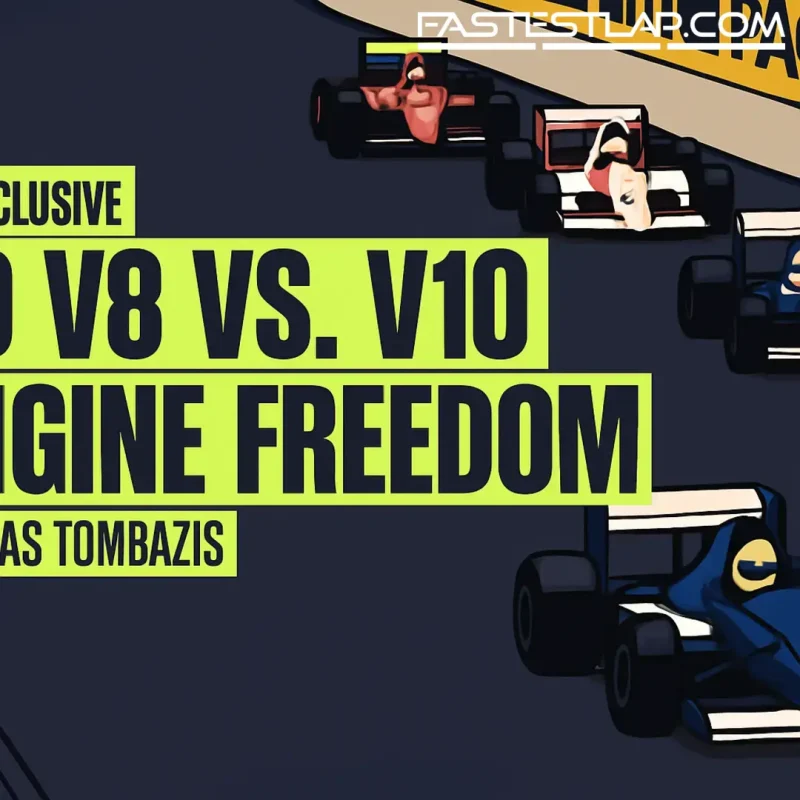Tombazis shuts door on V8/V10/V12 free-for-all: F1 to stay single-spec through 2030
If you’ve been daydreaming about a grid split between snarling V12s, howling V10s and sharp-edged V8s, wake up. Formula 1 isn’t going there—at least not this side of 2031.
FIA single‑seater boss Nikolas Tombazis has cooled the nostalgia in no uncertain terms, making it clear that engine variety won’t be part of the plan while the next-generation hybrids bed in. The sport is locked to a new 1.6‑litre turbo‑hybrid V6 architecture for 2026—running sustainable fuels, far more electrical deployment, and active aerodynamics—and that package is set to carry F1 to the end of 2030.
The idea of loosening the rules and letting manufacturers pick their own architecture—V6, V8, V10, even V12—has been floated more than once as the paddock wrestles with ever‑more complicated hybrid rules. The counterargument is romantic and tidy: there’s a cost cap for power units, so let the best ideas win within the same budget ceiling. But Tombazis says that’s a myth, not a model.
His reasoning is blunt. Cost caps aren’t a magic wand because not all manufacturers operate on a level playing field. Some are fully embedded inside global OEMs, others are more independent. They’re spread across different countries, different legal frameworks, different accounting systems. If the technical regs were blown wide open and the cost cap left to do the policing, those structural differences would simply show up on track as big performance gaps. In short: the richest loopholes always find a way.
That, more than anything, is the FIA’s red line. The governing body believes technical freedom without tight prescriptions would turbocharge an arms race, invite budget shenanigans, and drag F1 back toward eras where one or two teams lapped the field. Tombazis has little interest in engineering purity if it hammers competitive balance: engineers aren’t the sport’s “main clients,” as he put it.
All of this plays out against the most radical reset F1 has attempted since 2014. The 2026 power units keep the 1.6‑litre turbo but move to a near 50/50 split between internal combustion and electrical power. To make that work without turning racing into an energy‑management exam, the cars are getting active aero—yes, for the first time in decades. Drivers will switch between high‑downforce and low‑drag states (internally dubbed Z‑Mode and X‑Mode) depending on corner or straight. There’s also an electrical “override” to deliver full battery punch for attack moments, while a managed energy ramp on the straights is meant to stop the awkward regen tricks we’ve seen in recent years.
If that sounds like a lot, it is. Which is why some inside the paddock pushed to shorten the next rules cycle and go simpler—think naturally aspirated or even turbo V8s by 2029 or 2030. A key sit‑down pencilled in for the week after Monza was quietly shelved when it became apparent the FIA didn’t have the supermajority support from manufacturers to rip up the plan. The bottom line: the 2026 engines will run their course to 2030.
The money guardrails are already set. In 2026, new power unit entrants have a higher spend limit than incumbents—$190 million plays $148.5 million—to help them catch up. From 2027, everyone drops to the same $148.5m ceiling. Tempting, then, to say “open season on concepts.” But the FIA’s stance is that technical constraints are as essential as the dollars, otherwise those numbers become targets to bend, not rules to obey.
Of course, anyone who has heard Sebastian Vettel blip the throttle in Senna’s Ford‑powered MP4/8—or watched a Williams‑Renault V10 climb the Goodwood hill on synthetic fuel—knows the V‑engine itch is real. The sound, the simplicity, the theatre. But modern F1 is a very different beast. Simulation power is immense, reliability is relentless, and development arrives like clockwork. Give today’s giants yesterday’s freedom and the gaps would likely explode, not close.
And that, for F1 in 2025, is the crux. The field is tighter than it’s been in decades; on a good Saturday, you can cover a grid with a blanket and call it parity. The sport doesn’t want to trade that jeopardy for a shot of nostalgia that fades by round five when one concept proves uncatchable.
So no, we won’t be getting a buffet of engine notes anytime soon. The next five seasons will be about perfecting a single, complex formula—making the cars racier with active aero, making the fuel greener, and making sure the stopwatch rewards execution more than accounting creativity. It’s not romantic, but it might just be good racing.




